Cannabis Compounds: Cannabinoids and Flavonoids
The marijuana plant is a genetic make ups of compounds that affects how the plant grows and interacts with human senses. Learn about how the result of these cannabis compounds determine the medicinal benefits.
Cannabinoids
Cannabinoids contain the active elements in the plant. Some of them, like THC, produce psychoactive results associated with being “high” whereas others, such as cannabidiol (CBD), which offer non-psychoactive benefits. There are hundreds of cannabinoids in a given plant, and they are divided into two categories: endocannabinoids and phytocannabinoids.
Some of the main cannabinoids most frequently discussed within the scientific and cannabis communities are listed as follows:
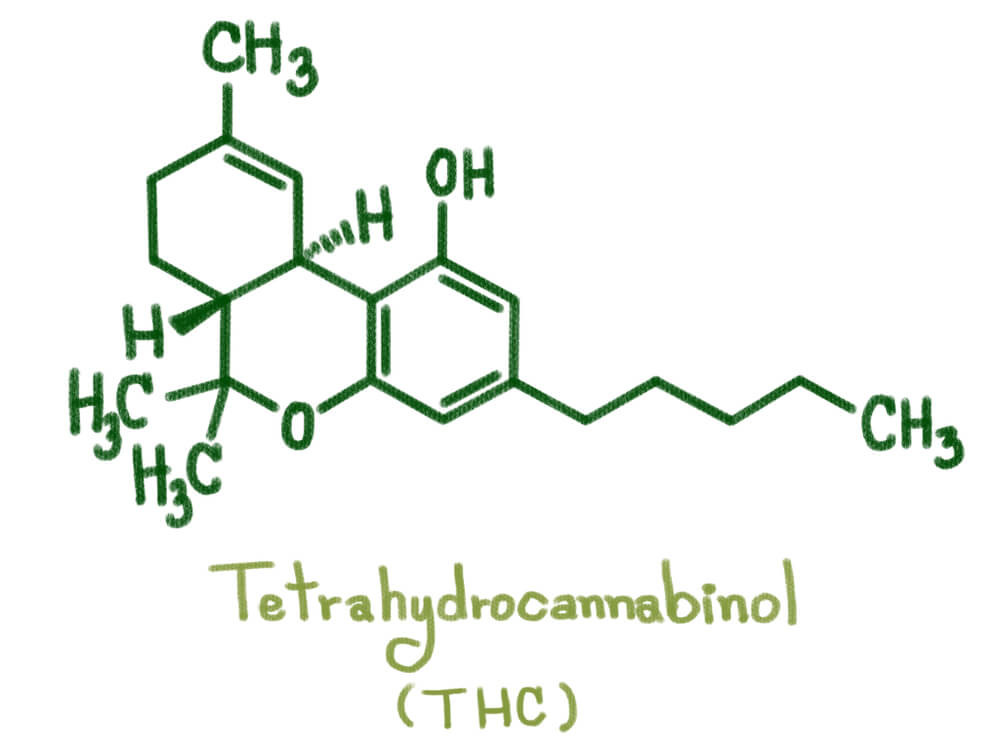
THC (Tetrahydrocannabinol)
Arguably the most well-known cannabinoid, tetrahydrocannabinol (THC) is a primary element in cannabis, which, put simply, gets you “high.” When THC interacts with the human endocannabinoid system’s CB1 receptors, it produces the psychoactive effect that many have come to enjoy, both medicinally and recreationally.
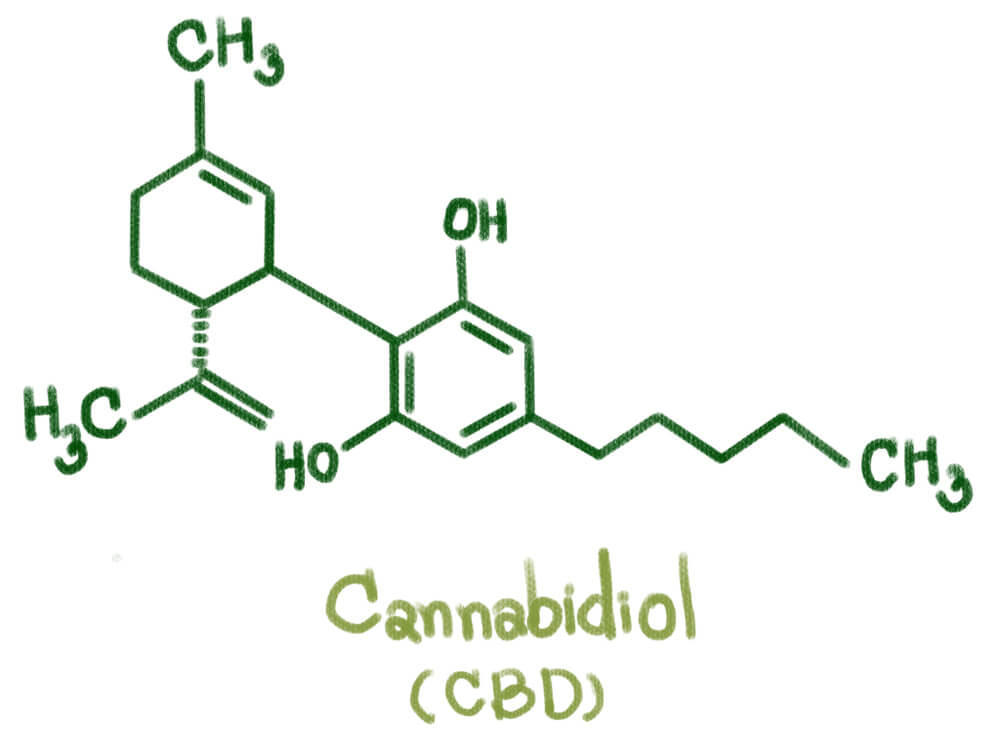
CBD (Cannabidiol)
While Cannabidiol (CBD) is processed by our endocannabinoid system just like THC, the effects are significantly different. Because CBD sold nationwide is required to contain no more than 0.3 of THC, its health benefits are virtually devoid of any of the psychoactive effects for which THC is known. For this reason, it has been touted by many in the medical field as a treatment for many ailments, including a number of juvenile illnesses and disorders. Recently, scientists have become most interested in its effectiveness against some of the most dubious childhood epilepsy syndromes, including Dravet and Lennox-Gastaut (LGS) syndromes, both of which tend to be resistant to traditional antiseizure medications.
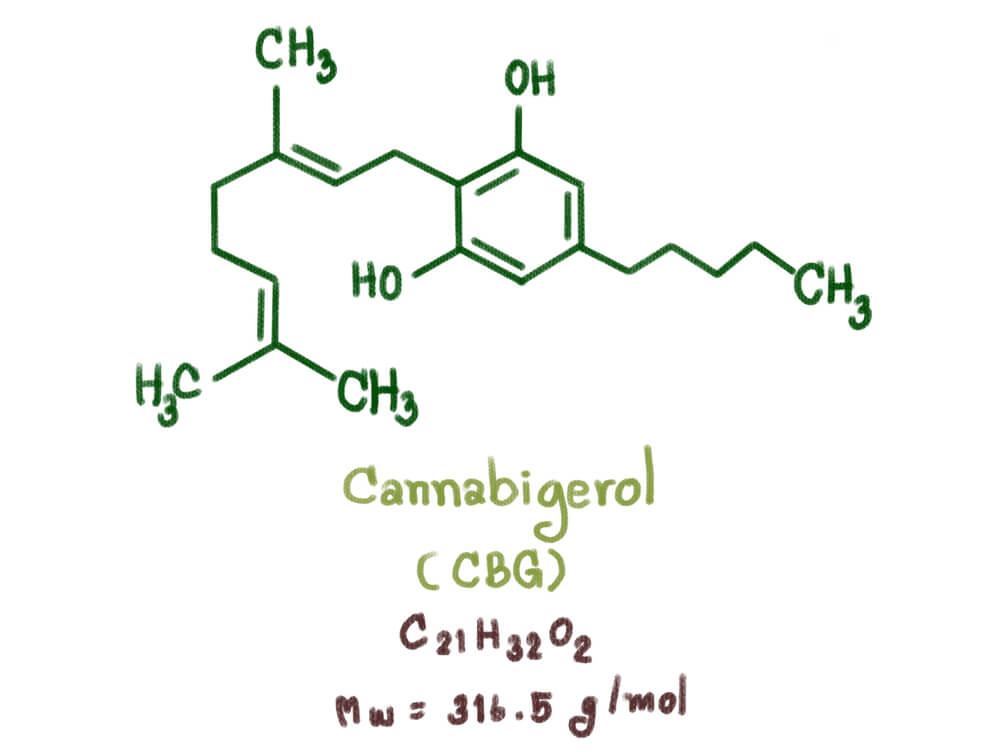
CBG (Cannabigerol)
Because it is found in such comparatively smaller quantities than some of its counterparts, CBG is considered a minor cannabinoid. Research suggests that CBG could potentially be used to treat cancer in a couple of ways. First, the cannabinoid has been shown to block receptors that cause cancer cells to grow. Additionally, clinical studies involving CBG indicate it could be used as an appetite stimulant to treat cachexia, which causes weight loss and muscle atrophy in late-stage cancer patients.
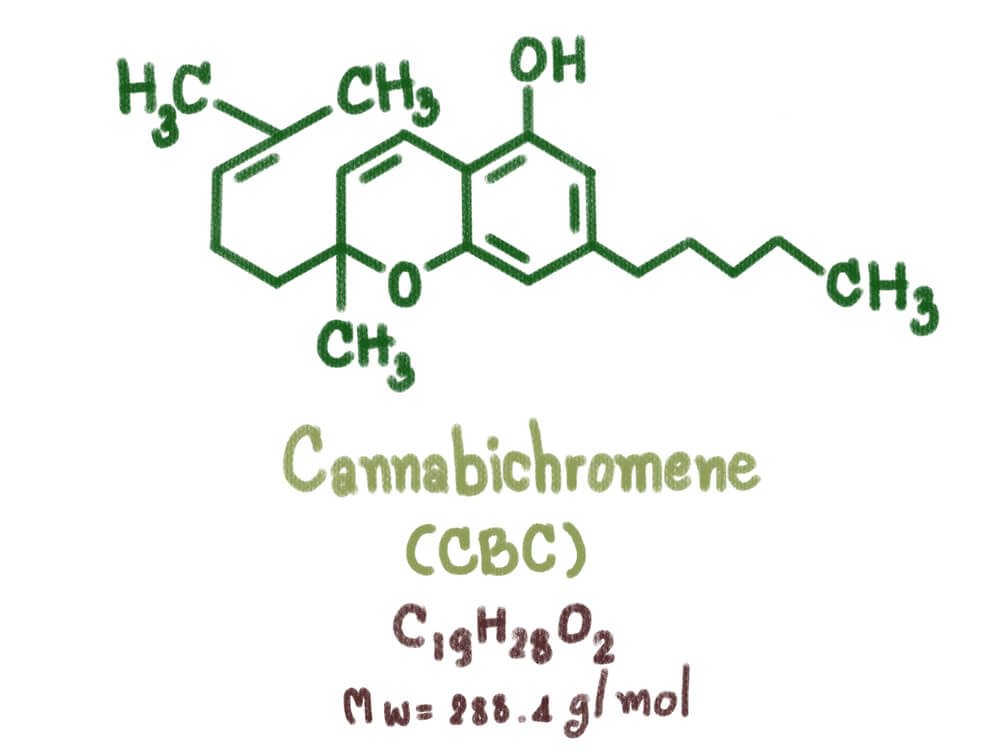
CBC (Cannabichromene)
In a 2006 scientific study, CBC was found to be the second most effective cannabinoid, after CBG, in suppressing the growth of new cancer cells. Additionally, it has been shown to treat pain and inflammation associated with osteoarthritis, and has shown promising potential regarding the treatment of neurodegenerative diseases like Alzheimer’s.
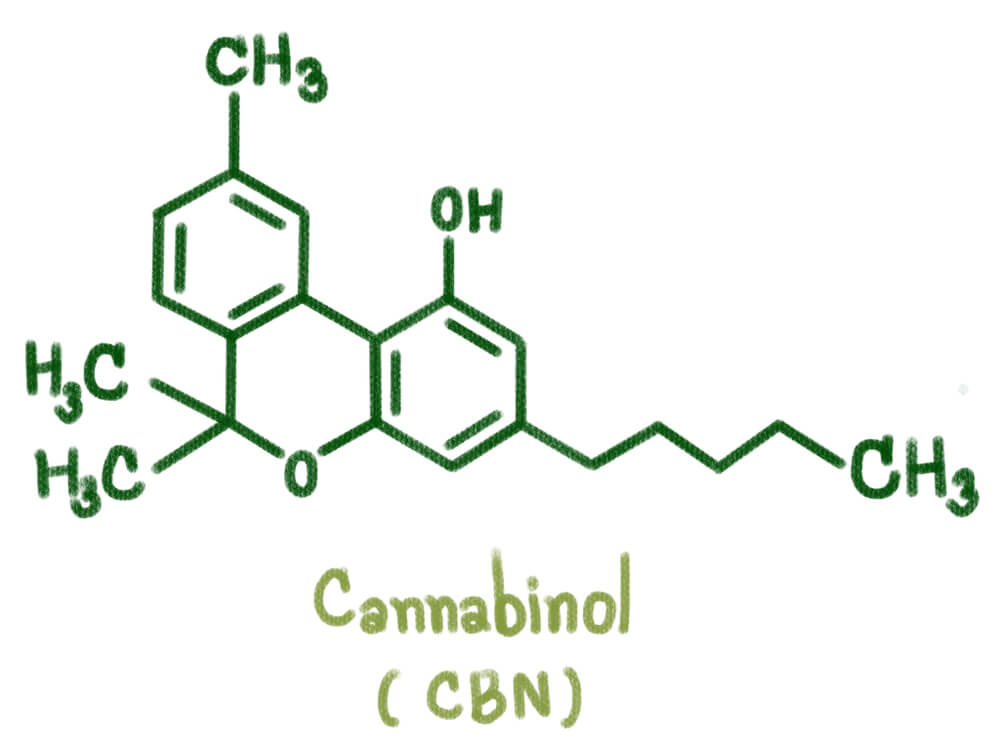
CBN (Cannabinol)
When THC ages, it begins to break down in terms of potency, ultimately becoming CBN. This cannabinoid is often associated with CBD, however, it’s important to note that whereas the latter is a non-psychoactive element, CBN can retain around 25% of the potency of THC, which means that it can still produce some mild psychoactive effects. Although CBN research is ongoing in hopes of better understanding the full range of its benefits, existing research suggests it can be used to treat afflictions such as REM and Circadian sleep disorders.
Flavonoids
Flavonoids are compounds found in a variety of plant life. While flavonoids represent a unique part of plant composition, they are perhaps, as of yet, the least researched molecules in the cannabis plant.
Just as with other molecular elements present in cannabis, there are hundreds of flavonoids in a given cannabis plant, and research into better understanding their role in cannabis treatment is ongoing. While that may currently be the case, here is what is known about some of the flavonoids present in cannabis.
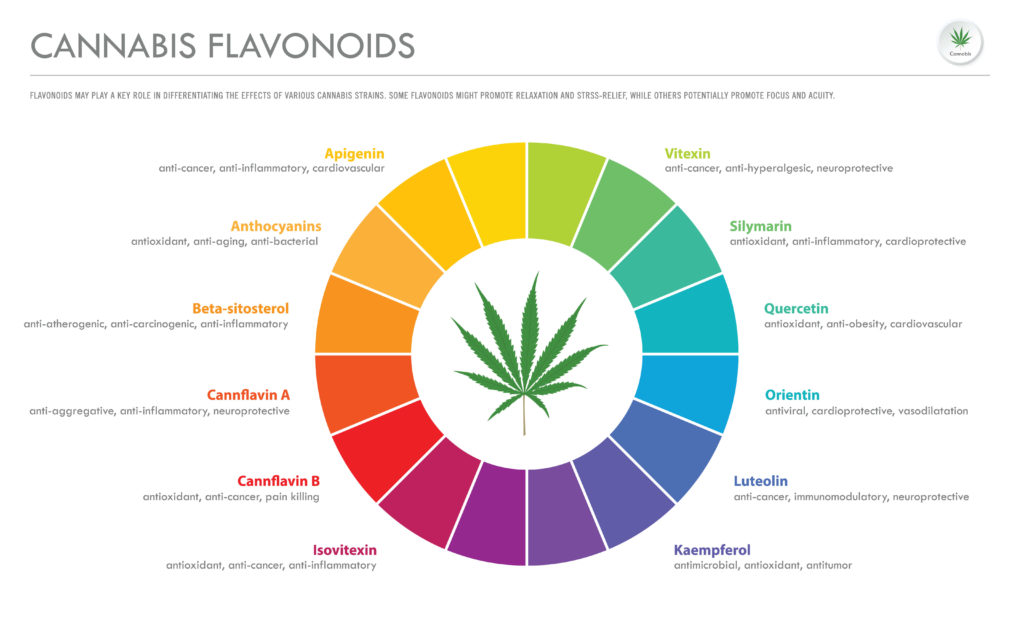
Cannflavin
Cannflavin are flavonoids unique to the cannabis plant. In 1985, while conducting research as a PhD student at the University of London, Dr. Marilyn Barrett became the first to identify Cannflavin A and Cannflavin B compounds. Both flavonoids were found to inhibit the production of Prostaglandin E2 (PGE2), which produces inflammation in the body.
Quercetin
Like Cannflavin, there is limited research available when it comes to the health benefits of Quercetin. However, the bulk of what has been ascertained about the flavonoid appears to indicate that it may also contain anti-inflammatory qualities, in addition to being an antioxidant. Based on what is known, Quercetin could potentially diminish swelling, fight cancer cells, regulate blood sugar, and protect against heart disease.
Beta Sitosterol
Often extracted from other types of plant life, beta sitosterol is widely used as a homeopathic health supplement. Most commonly, this flavonoid is used to treat high cholesterol by limiting the amount of cholesterol that enters the body. Additionally, beta sitosterol has been tested to treat symptoms related to enlarged prostate. Most recently, studies have been conducted to observe its efficacy against Alzheimer’s.
Cannabinoids contain the active elements in the plant. Some of them, like THC, produce psychoactive results associated with being “high” whereas others, such as cannabidiol (CBD), which offer non-psychoactive benefits. There are hundreds of cannabinoids in a given plant, and they are divided into two categories: endocannabinoids and phytocannabinoids.
Some of the main cannabinoids most frequently discussed within the scientific and cannabis communities are listed as follows:
Kaempferol
Like some of its fellow flavonoids, Kaempferol acts as an effective antioxidant by relieving oxidative stress, while also helping to facilitate metabolism. Furthermore, it is an antibacterial agent, and has most recently been garnering interest as a possible form of cancer treatment, chemoprevention, and a further preventative measure against other chronic diseases.
***
GreenPharms is more than just a dispensary. We are a family-owned and operated company that cultivates, processes, and sells high-quality cannabis products in Arizona. Whether you are looking for medical or recreational marijuana, we have something for everyone. From flower, edibles, concentrates, and topicals, to accessories, apparel, and education, we offer a wide range of products and services to suit your needs and preferences. Our friendly and knowledgeable staff are always ready to assist you and answer any questions you may have. Visit our dispensaries in Mesa and Flagstaff, or shop online and get your order delivered to your door. At GreenPharms, we are cultivating a different kind of care.
Follow us on social media



